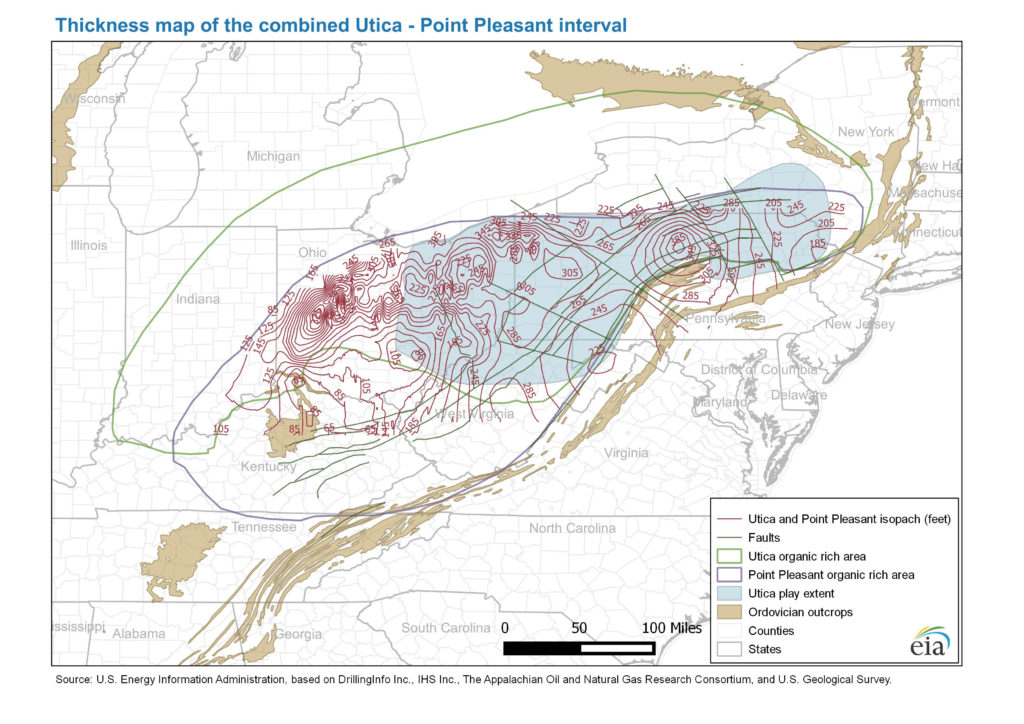Utica Shale | NGI All News Access
EIA Unveils New Utica/Point Pleasant Maps
The U.S. Energy Information Administration has released new maps that show the structure, thickness, geologic characteristics and the location of producing wells in the Utica Shale play.

Since 2011, when the first commercial production was reported from the play in Ohio, which includes the Utica Shale and the Point Pleasant formation, more than 1,728 wells have been drilled in the play across Ohio, West Virginia and Pennsylvania.
The agency has previously published updated maps for other major plays across the country, including the Marcellus and Eagle Ford shales. EIA said the Utica play spans about 60,000 square miles across Ohio, West Virginia, Pennsylvania and New York.
The agency also reaffirmed that the Point Pleasant formation, which is deeper than the Utica, is the play’s most common drilling target. EIA said most of the play’s productive areas are located in eastern Ohio and western Pennsylvania.
EIA’s subsea elevation contour maps were developed with depth measurements from wells and outcrop data from the U.S. Geological Survey.
The Point Pleasant, the maps show, is deepest in southwest Pennsylvania, reaching depths of 13,000 feet, and it is shallowest at the junction of Ohio, Indiana and Kentucky. The Utica formation, EIA said, reaches depths of 12,500 feet in a “northeast arc” through Pennsylvania and is shallowest at the junction of Ohio, Indiana and Kentucky. The most productive wells in the play, EIA added, are found at depths ranging from 5,000 to 11,000 feet.
EIA’s thickness maps for each formation were developed using observations from wells.
The Utica Shale is thickest in western Ohio and the northwest corner of Pennsylvania at 200-300 feet and thins to 50 feet or less in southern Ohio and northern Kentucky. The Point Pleasant formation reaches a thickness of more than 200 feet in central Pennsylvania and thins to less than 20 feet in eastern Kentucky.
The combined thickness of the Utica and Point Pleasant is less than 100 feet in the area where Ohio, West Virginia and Kentucky meet. The thickness reaches more than 300 feet in northwest and central Pennsylvania and in northeast and central Ohio. Most producing wells, EIA said, are located where the formation has a thickness of 150 feet or more.
The Utica play has attracted more of the EIA’s attention in recent years as development there has increased. The play was not tracked in the agency’s Drilling Productivity Report when it was launched in October 2013, but by August 2014, EIA said it would include the play by tracking production in 20 Ohio counties (see Shale Daily, Aug. 1, 2014).
© 2024 Natural Gas Intelligence. All rights reserved.
ISSN © 2577-9877 | ISSN © 2158-8023 |
